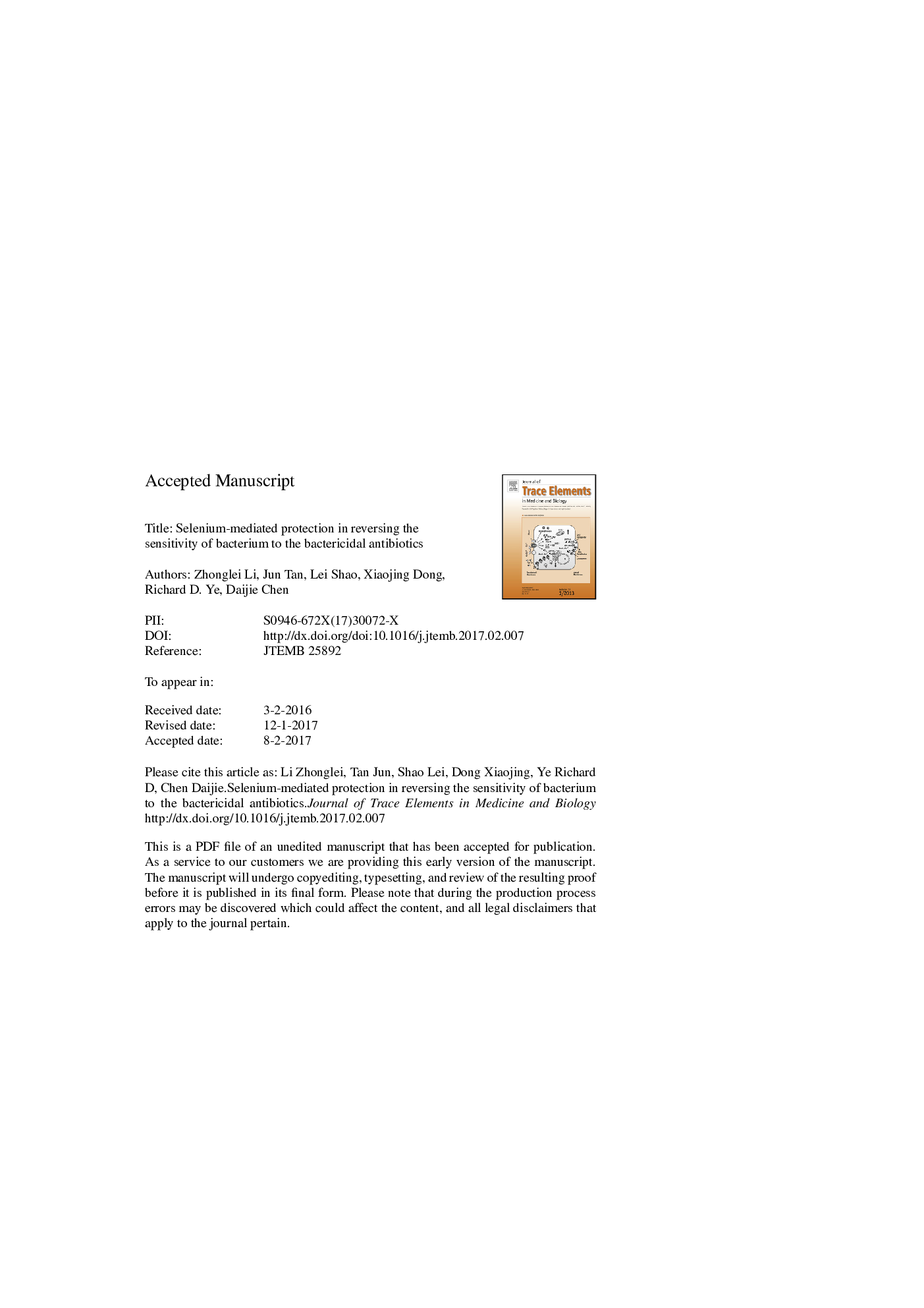| Article ID | Journal | Published Year | Pages | File Type |
|---|---|---|---|---|
| 5138790 | Journal of Trace Elements in Medicine and Biology | 2017 | 23 Pages |
Abstract
Inducing production of damaging reactive oxygen species (ROS) is an important criterion to distinguish the bactericidal antibiotics from bacteriostatic antibiotics. Selenoenzymes were generally recognized to be a powerful antioxidant capable of scavenging free radicals, protecting the cells from the harmful effects of ROS. Therefore, the present study was carried out to investigate the selenium (Se)-mediated protection in reversing antibiotic sensitivity and the role of selenoenzymes in alleviating the negative effects of oxidative stress. The cellular antioxidant activity of Se-enriched bacteria was analyzed, as well as intracellular ROS production and elimination when Se-enriched bacteria in the presence of various antibiotics. Compared to complete inhibition of the parental strain by bactericidal antibiotics, it only exhibited slight and reversible inhibition of Se-enriched Escherichia coli ATCC25922 and Staphylococcus aureus ATCC25923 at the same conditions, which indicated that intracellular selenium provided substantial protection against antibiotics. ROS generation caused by bactericidal antibiotics was confirmed by fluorescence spectrophotometry using 2â², 7â²-dichloro- uorescein diacetate (DCFH-DA) as substrate. The time course experiments of pretreatment with selenium showed significant decrease of ROS level at 2Â h. In summary, the present study provides experimental evidence supporting selenoenzymes has good scavenging effect to ROS and can protect bacteria from oxidative stress injury induced by bactericidal antibiotics.
Related Topics
Physical Sciences and Engineering
Chemistry
Analytical Chemistry
Authors
Zhonglei Li, Jun Tan, Lei Shao, Xiaojing Dong, Richard D. Ye, Daijie Chen,
